What Does Dubliner Cheese Taste Like? Unraveling This Irish Gem’s Flavor
Dubliner cheese stands as a unique Irish dairy delight that sparks curiosity among food enthusiasts.
Crafted in the rolling green landscapes of ireland, this distinctive cheese offers more than just another dairy product.
Cheese lovers often wonder about its remarkable characteristics and flavor profile.
The complex origins and artisan production methods make Dubliner cheese truly intriguing for those passionate about culinary experiences.
Several factors contribute to its exceptional reputation among cheese connoisseurs, creating a sense of anticipation about its potential taste sensations.
Distinctive ingredients and traditional crafting techniques set this cheese apart from standard varieties found in typical grocery selections.
Understanding the nuanced story behind Dubliner cheese will transform how you appreciate this remarkable dairy creation.
Let's unravel the delicious mystery together and learn what makes this cheese so special.
Dubliner Cheese: A Special Kind
Dubliner cheese has a unique background and some fun facts about where it comes from. Before we explore what it tastes like, let’s start with a few basics about this special cheese:
Where It Comes From
Dubliner cheese is an Irish cheese named after Dublin, the capital city, but it’s actually made in Cork, which is Ireland’s second-largest city.
The cheese was first created by John Lucey in 1990, and at first, it was called “Araglen.”
Between 1991 and 1994, Carbery Milk Products worked on bringing the cheese to market. In 1996, after Ornua started selling it internationally, the cheese was renamed Dubliner.
Today, Dubliner is produced in large amounts under the Kerrygold brand.
Dubliner Cheese Overview
Dubliner cheese comes from Ireland and uses cow's milk. Making this cheese takes at least one year, creating a firm cheese with a pale yellow or almost white look.
Dubliner cheese offers a buttery and sweet flavor. People compare its texture to Parmesan because both are granular cheese types.
Grating this cheese works well for melting. Still, its melting ability doesn't match Muenster or similar cheese varieties.
People can buy Dubliner cheese easily in supermarkets and online stores across many countries.
Vegetarians like this cheese because its production skips rennet, which typically comes from animal stomachs during cheese making.
How Dubliner Cheese is Made
Dubliner cheese follows a special process that keeps its exact recipe hidden. People can still learn about how this cheese comes to life through basic cheese-making steps.
Making Dubliner cheese starts like other granular cheeses with stirring and draining cheese curds and whey. Cheesemakers heat milk and use special microbial products instead of traditional rennet to help milk turn into curds.
Salt plays an important role in cheese production. Workers add salt to help stabilize and protect the cheese after separating curds from whey.
Dubliner cheese sits and matures for one full year before shops receive it for selling.
Dubliner Cheese Nutrition Facts
Dubliner cheese offers more than just vegetarian benefits. People following keto diets love this cheese because it contains zero carbs and plenty of healthy fats.
Cheese makers typically source milk from grass-fed cows, ensuring high levels of omega-3 and linoleic acids.
Irish dairy experts know this cheese supports overall health.
It helps control blood pressure and manages body fluid balance while providing steady energy.
Calcium stands out as a key reason to enjoy Dubliner cheese.
This mineral builds strong bones and teeth, supporting body structure and movement. Muscles and tissues depend on calcium to stay rigid and flexible.
Dubliner Cheese Flavor Overview
Ireland is famous not just for its green scenery, but also for the rich taste of Dubliner cheese.
Dubliner cheese brings together a gentle sweetness, a bit like Parmigiano-Reggiano, and the sharpness you get from aged cheddar.
When you try Dubliner, you’ll notice it has a creamy, nutty smell and a flavor that mixes sweet, nutty, and sharp notes all in one bite.
There’s also a nice blend of sweet and savory, which makes Dubliner a great cheese for cooking and adding to many dishes.
Types of Dubliner Cheese:
How to Pick Fresh Dubliner Cheese
It’s important not to eat cheese that has gone bad, as it can make you sick and won’t have the same taste or nutrients. To keep yourself healthy, be sure to check a few things before you buy Dubliner cheese:
Look At The Package
You want to be smart when picking out Dubliner cheese.
Cheese might last past its printed date, but eating spoiled food is risky.
Make sure you check the expiration date before purchasing Dubliner cheese to confirm it hasn't gone bad.
Next, inspect the packaging carefully.
Good cheese packaging should:
Packages with holes mean trouble. Skip those cheese blocks and find a better option.
Check How It Looks
Dubliner cheese reveals its quality through its color and texture. Pale yellow hues match closely with white cheddar, showing a consistent appearance.
Small crystal formations across the surface signal proper aging and maturity.
Checking cheese safety involves more than visual inspection.
Smell plays a key role in determining freshness. Dubliner cheese should have a clean, neutral scent without any odd odors.
Dark, dry patches or strong ammonia smells indicate spoilage. Your senses help confirm whether the cheese remains good to eat.
Storing Dubliner Cheese at Home
Just like with most cheeses, you can keep Dubliner cheese fresh by putting it in the fridge or freezer. Here’s how you can do both the right way:
Store Cheese In The Fridge
Store Dubliner cheese in the fridge for 3-4 weeks. Protect the cheese by wrapping it in wax or parchment paper, then cover with plastic.
Mold spots require careful handling. Cut out the moldy section plus 1 inch around and below it.
Cover the remaining cheese with fresh wrap.
Cheese makers recommend storing Dubliner at 2-5 C in the refrigerator.
Consume within 7 days after opening the package. For optimal taste, remove the cheese from the fridge 30 minutes before serving.
Freeze Dubliner Cheese
Cheese lovers can save money by freezing Dubliner cheese for later use. Cold storage helps keep cheese good for half a year while maintaining its best quality.
Cheese stored at zero degrees can last even longer without spoiling.
Protecting cheese before freezing matters a lot.
Wrap the block completely in plastic wrap, strong aluminum foil, or a thick freezer bag. Frozen cheese changes a bit during storage.
Flavor might become slightly different, so plan to use it mainly in cooked dishes where texture shifts won't matter as much.
How to Eat Dubliner Cheese
Dubliner cheese is easy to enjoy in lots of ways. Many people like to snack on it just as it is because it’s nicely crumbly.
You can also pair it with your favorite wine, try it with Cabernet, Guinness, or even a fruity wine like Irish wine or oaky Chardonnay. It also tastes great with fruit, especially apples or pears.
If you want to cook with Dubliner cheese, you can melt it on warm bread, or use it in sandwiches and pasta for a fresh twist on the usual flavors.
Try These If You’re Out of Dubliner
If you can’t find Dubliner cheese, there are a few other cheeses you can use instead. Let’s see which types work best as substitutes:
Cheddar Cheese
Cheddar originates from England but enjoys worldwide popularity. Cow's milk creates this hard cheese.
Maturation periods range from 3-24 months. Kitchens everywhere keep cheddar as a simple Dubliner cheese substitute.
Colors of cheddar span white to pale yellow. Milk sources or natural coloring like annatto can darken cheese shades.
Orange cheddar pieces look quite appealing.
Mature cheddar works perfectly when replacing Dubliner cheese.
Long aging produces white speckles in cheese. Aged versions closely match Dubliner's sharp taste profile.
Parmigiano-Reggiano
Parmigiano-Reggiano comes from Italian dairy farms where workers carefully craft this special cheese. Raw cow milk goes through a slow process that takes one full year to complete.
Its flavor stands out with a sharper taste compared to regular cheddar.
Similar to Dubliner cheese, Parmigiano-Reggiano contains a hard, grainy texture.
Its flavor brings nutty and fruity notes while matching Dubliner's white crystal structure precisely.
People love sprinkling this cheese over pizza and pasta dishes.
Cheese lovers also enjoy snacking on Parmigiano-Reggiano or pairing it with fresh fruit slices.
Shoppers should know an important detail: Parmigiano-Reggiano can be called Parmesan, but not all Parmesan cheeses meet authentic Italian standards.
Many products simply copy the production method without originating from Italy.
Gruyere Cheese
Gruyere cheese comes from Switzerland and works well instead of Dubliner cheese. Cheese makers produce this firm milk-based cheese with characteristics very close to Dubliner.
Cheese experts age Gruyere for minimum six months, which creates a deep flavor with sharp and nutty notes. Cooks enjoy using Gruyere to boost taste in many dishes like mac n cheese and grilled sandwiches.
Melting properties make Gruyere special. When heated, this cheese offers a smooth and creamy texture unlike Dubliner's crumbly nature.
People who want cheese for baked meals will find Gruyere an excellent choice.
Delicious Recipes With Dubliner
Now for the fun part, let’s talk about recipes with Dubliner cheese. This cheese has such a great taste that you can use it in place of many other cheeses.
Here are some popular dishes you can make with Dubliner cheese:
Dubliner Au Gratin Potatoes
Dubliner Au Gratin Potatoes bring magic to my Christmas dinner table. Guests always rave about this super tasty side dish that matches perfectly with main courses.
Soft potato slices bathed in creamy cheese create a flavor blend that lingers in people's memories.
Making this cheesy potato recipe feels like a special treat.
You can quickly whip up this amazing side dish that will wow everyone around you.
Guinness Dubliner Dip
Guinness Dubliner Dip brings people together with its delicious cheese blend. Guests will love this warm starter at holiday gatherings.
People will cheer for this golden, melty goodness that everyone wants to share.
Serve this dip with crispy rye bread slices.
Crunchy bread and smooth cheese create an amazing taste combination that makes everyone happy.
Chicken Stuffed With Dubliner And Tomato
Chicken meets cheese in a delightful blend of tastes. This pairing brings something special to your meal.
Melted cheese drapes over juicy chicken, creating a mouthwatering experience that sticks in your memory.
Irish Cheese Toast Sandwiches
Irish cheese toasties bring classic comfort to mealtime. Dubliner cheese fills each bite with rich taste.
Warm bread holds salty spices that make this snack special. Beer pairs perfectly with these tasty little treats.
Small bites pack big flavors that leave you feeling happy and full.
Waffles With Ham, Rosemary, And Cheese
Dubliner cheese waffles offer a tasty twist on the classic sweet treat. Cheese lovers can enjoy this savory morning meal that brings new excitement to breakfast or brunch.
Crispy edges and warm cheese create a delightful combination that makes your morning special.
Pairing Dubliner Cheese with Beverages
Dubliner Taste and Q&A
1. What are the little white specks in Dubliner cheese?
Those tiny white spots are just calcium crystals! They form as the cheese ages and are a normal sign of well-matured cheese. They’re completely safe to eat and add a little crunch.
2. Is it okay if there’s an oily layer on my Dubliner cheese?
Yes, sometimes you’ll see a bit of oil on the surface. That’s just natural fat coming out, especially if the cheese has been stored in the fridge for a while. It won’t harm the cheese, just blot it away before serving.
3. Is Dubliner cheese the same as cheddar?
Not exactly. While Dubliner and cheddar look alike and both taste rich and a bit nutty, Dubliner has a sweeter flavor and a unique aroma thanks to milk from grass-fed cows. You can use them in similar recipes, though!
4. Can I eat Dubliner cheese if I’m vegan?
No, Dubliner cheese is made from cow’s milk, so it isn’t suitable for a vegan diet. However, vegetarians who eat dairy can enjoy it.
5. Why does Dubliner cheese taste so unique?
Dubliner’s special flavor comes from the milk of grass-fed cows in Ireland. That gives the cheese a slightly sweet taste and a natural, pleasant smell.
Why Dubliner Is So Popular
Ireland isn’t just known for its stunning scenery, the people there are also proud of their famous Dubliner cheese. If you get the chance, give this tasty, fragrant cheese a try.
You might find yourself loving it! If you enjoyed reading this and think it’s helpful, feel free to share it with your friends or family.
I’d also love to hear your thoughts, so please leave a comment if you have anything to add. Thanks for stopping by!


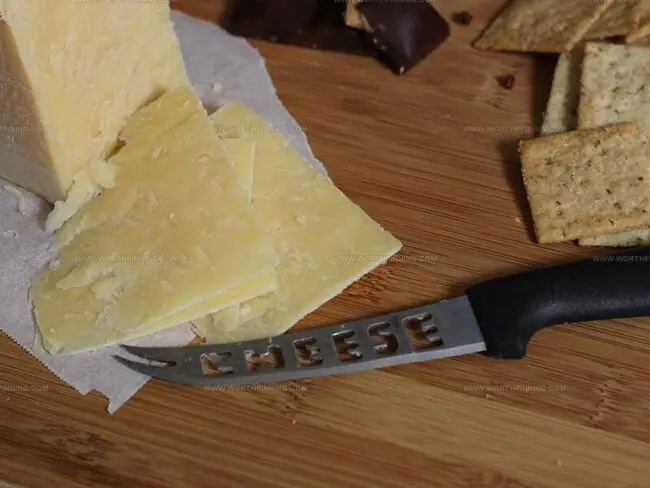
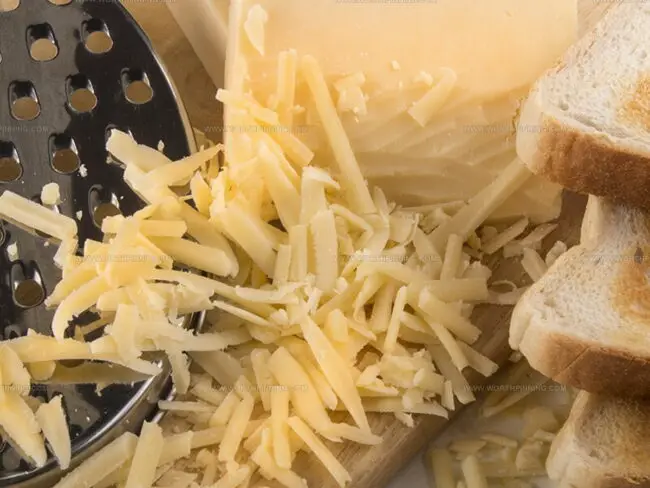
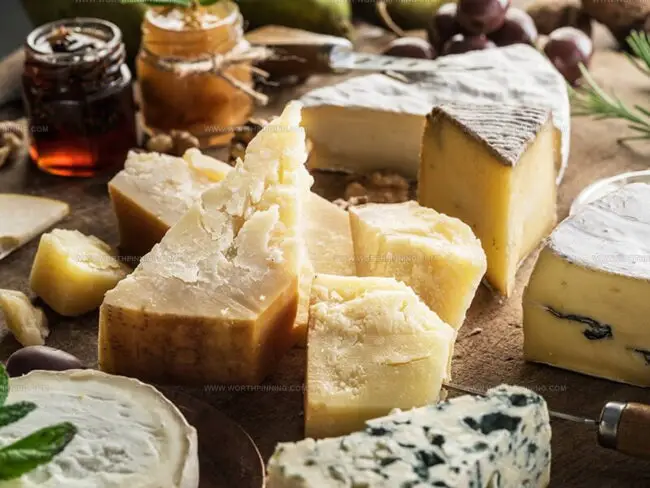
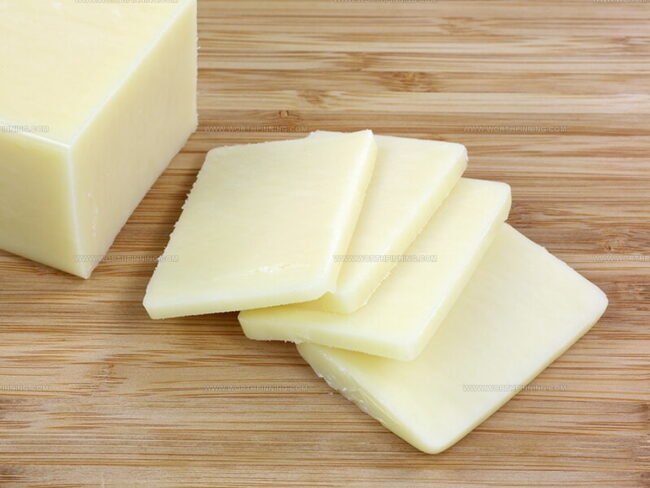

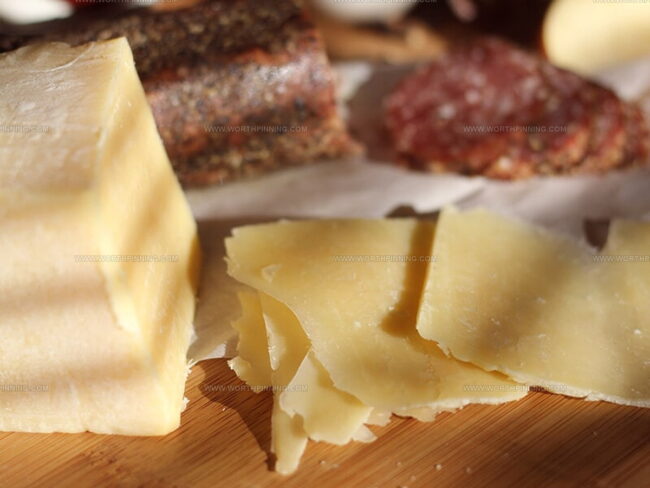

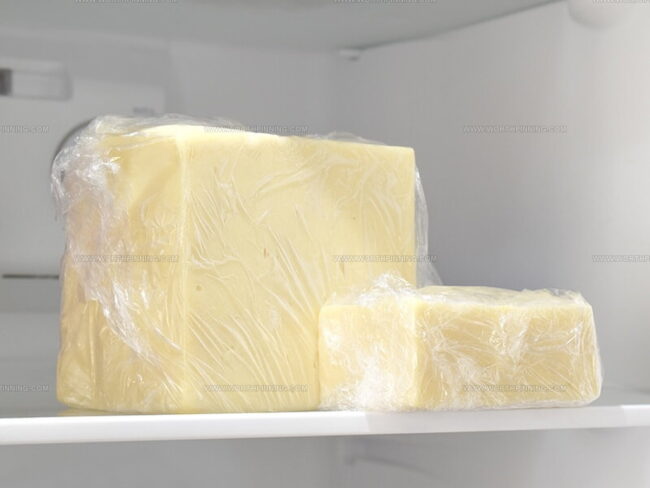
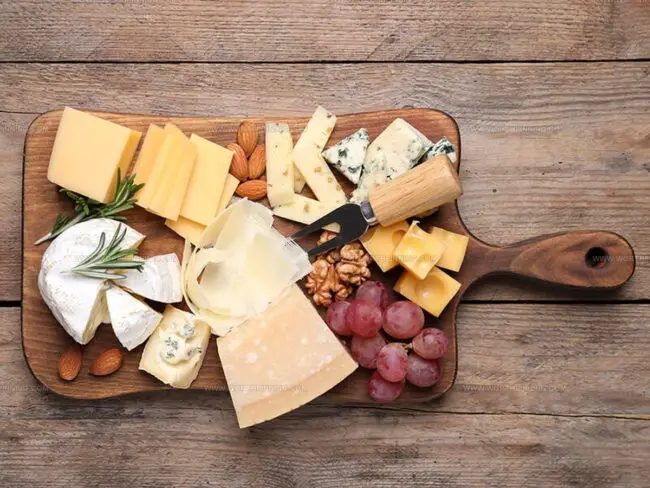
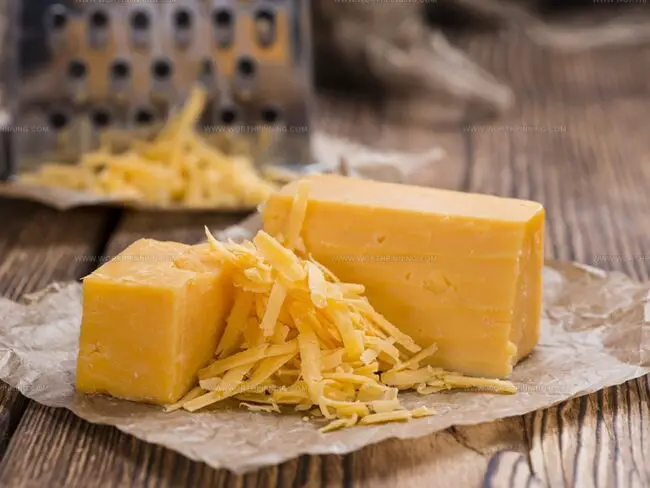

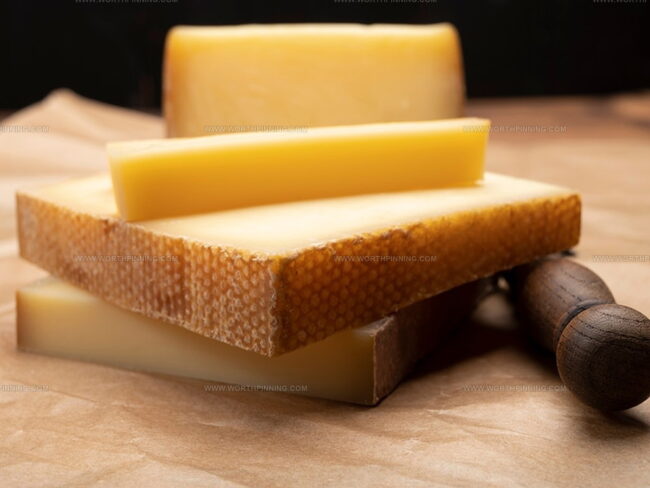
Sophia Rivera
Recipe Developer & Kitchen Tips Specialist
Expertise
Education
Austin Community College
San Antonio Culinary Institute
Sophia’s passion for baking began in her family kitchen, where she spent hours experimenting with new recipes. With a background in baking and pastry arts, she loves making desserts that are as visually stunning as they are delicious.
Sophia is all about using seasonal, locally sourced ingredients to create treats that everyone will enjoy. When she’s not creating mouth-watering desserts, you can find her gardening, making new recipes, or enjoying a relaxing afternoon with her family.